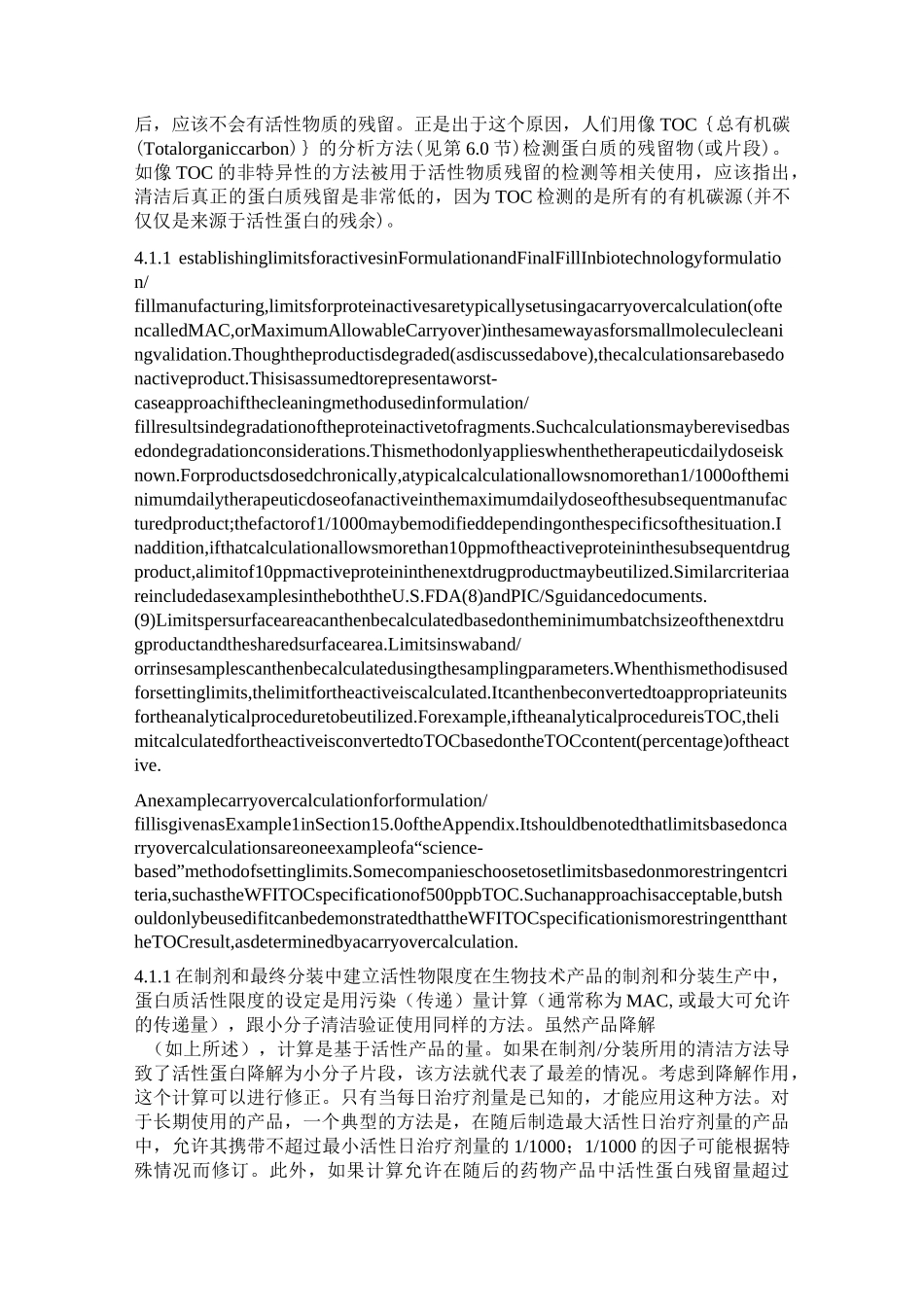清洁验证可接受限度(中英文版)(PDATR49 内容节选 3)4.0AcceptanceLimitsCleaningvalidationisperformedtodemonstratetheeffectivenessandconsistencyofacleaningprocedure.Therationaleforselectinglimitsforproductresidues,cleaningagentsandmicrobialcontamination,aswellasanyotherprocesscomponents,shouldbelogicallybasedonthematerialsthatimpactthemanufacturingprocessandthesafetyandpurityoftheproduct.Theacceptablelimitsforcleaningmanufacturingsystemsandcomponentsshouldbe“practical,achievableandverifiable.”(8)Limitsforcleaningvalidationgenerallycontainsomemeasurerelatedtotheactiveprotein(orothermajorcomponentofinterest),somemeasurerelatedtothecleaningagent,somemeasurerelatedtobioburdenlevels,somemeasurerelatedtoendotoxinlevels,andarequirementthattheequipmentbevisuallyclean.Inaddition,ifthereareanyspecifictoxicityconcernsrelatedtotheactiveproteinorotherprocesscomponents(forexample,cytotoxicity,allergenicity,orreproductivehazards),themanufacturer'stoxicologyorpharmacologygroupsmaydetermineifamodificationoflimitsisrequired,orwhethertheuseofdedicatedequipmentisneeded.Inthediscussionthatfollows,issuesforlimitsareconsideredbasedonthenatureoftheresidueandonthestageofmanufacturing ( e.g.,bulkactivevs.formulation/fill).Manufacturingstagesincludebulkactivemanufacturing(allstepsresultinginthebulkactivedrugsubstance)andformulation/fill(formulationofthebulkactiveintoafinisheddrugproductandprimarypackagingofthatdrugproduct).Bulkmanufacturingisfurtherdividedintoupstreamprocesssteps(allprocessstepsthroughharvesting)anddownstreamprocesssteps(purificationandfollowingsteps).4.0 可接受限度清洁验证的目的是为了证明清洁程序的高效性与一致性。选择产品残留、清洁剂、微生物污染,以及其他任何工艺成分的限度,逻辑上应该基于物料对生产流程和产品的安全性和纯度的影响而定。清洁生产系统和成分的可接受限度应该“切合实际、可达到、可证实”。清洁验证的限度一般包含与活性蛋白(或者其他的主要物质成分)相关分析、与清洁剂相关的分析、与生物负载水平相关的分析、与内毒素水平相关的分析,以及设备目检清洁要...


